Armenian Churches in Iran
It was in Parthian era that Christianity and the call to this religion were formed in Iran and some converted. Little by little, the shrines of the followers of this religion sprang up around Iran, each one built in a different way. The churches, as a symbol of the Christian world, were beautifully adorned and displayed unmatched architectural features. Today, there are nearly 600 churches in Iran, 90 of which are listed among the National Monuments list and 3 are recognized as World Heritage.
In this article we want to invite you to visit some of Iran’s beautiful churches which are unique examples of Christian religious buildings around the world and are referred to as architectural models:
Qara Kelisa Church, Chaldoran
The Church of St. Thaddeus, or Qara Kelisa, is a black and white stone building that is listed on the UNESCO World Heritage List and is one of the most remarkable religious sites in Christianity.
According to the Armenians, the Church of St. Thaddeus is the first church built by the preachers and apostles of Christ in the world and is recognized as the first Christian Church in the world. The church is named after one of the apostles of Jesus Christ who came to city called Ardaz in northwestern Iran in order to preach this religion in the year 40 or 43.
Without a doubt, Qara Kelisa Church is Iran’s most famous church. The church is also listed on the UNESCO World Heritage List since 2008. This church is located 20 kilometers northeast of Chaldaran in West Azerbaijan province and hosts many Armenians and Christians from Iran and various countries every year during Christmas.
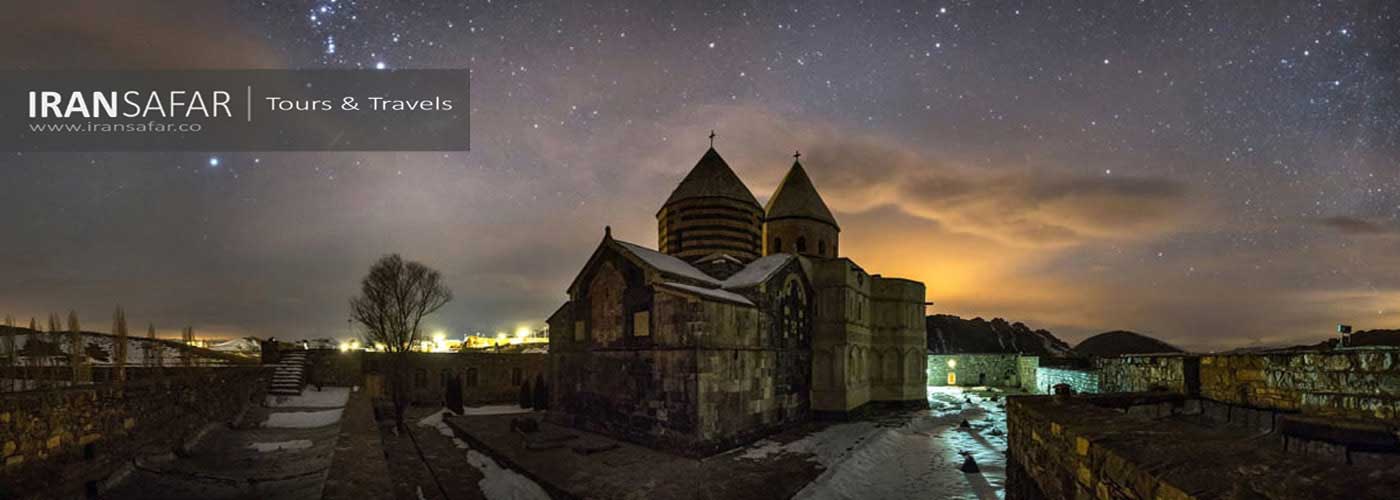 Qara Kelisa Church, Chaldoran, Iran
Qara Kelisa Church, Chaldoran, Iran
Is Qara Kelisa the First Church ever built in the World?
With a little bit of searching about the church, the first thing you notice is the title of the world’s first church for this sacred monument. No one has been able to give a precise date for the construction of this church, and it is estimated, probably, in the 1st or 2nd century AD. Searching through western sources and looking at a list of the world’s oldest churches, you will find that this date can actually prove that the Qara Kelisa is the first church in the world, but there are still some points to consider:
- According to historians and scholars, the newer sections of Qara Kelisa were obviously influenced from Armenian Etchmiadzin Cathedral in Armenia, which means that Etchmiadzin existed before Qara Church.
- As previously mentioned, Qara Kelisa church has been registered in the world heritage list, but on the page of the registration on the UNESCO World Heritage Site, there is no indication that the church is the first church in the world. If such a nickname is mentioned, then it is necessary for a world record
⚫ The church is known as one of the oldest churches in the world.
⚫ Some call it the world’s first church.
⚫ Because of its historical and spiritual significance, its name is on the UNESCO World Heritage List.
⚫ The church is believed to be built on the burial place of one of the Christian apostles.
⚫ This church hosts special Armenian ceremonies every year and is of great importance to them.
⚫ Despite of simplicity, it has a remarkable architecture.
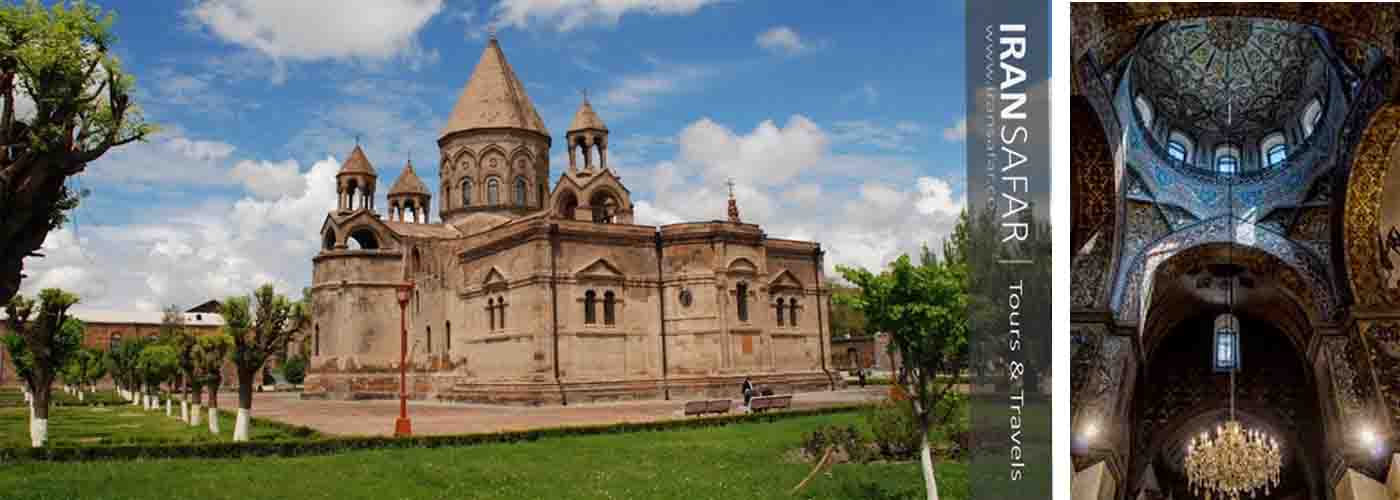
Etchmiadzin Cathedral is the mother church of the Armenian Apostolic Church, located in the city of Vagharshapat (Etchmiadzin), Armenia. According to most scholars it was the first cathedral built in ancient Armenia, and is often considered the oldest cathedral in the world.
Vank Cathedral | The Holy Savior
Vank Cathedral is one of the historic Armenian churches in Isfahan, dating back to the time of King Abbas II. Vank term is used in Armenian language as a monastery. This church is known among Armenians as Amna Perkich, meaning the Church of the Holy Savior, and derives its name from the Church of “Surp Amna Perkich Vank” in Nakhchivan, Azerbaijan.
And the top of the entrance door is a bell tower with three floors, on the second floor an hour weighing 300 kg. This bell tower and its date to 1931 – gifts from a merchant named Mardyrus Hordanian.
Vank Church with a total area of 8731 square meters (3857 square meters of built area) bears some features have distinguished it from other ancient Armenian churches:
Unlike most other Armenian churches which are built with stones, Vank is made of bricks as its main material.
The dome of the Armenian churches are mainly cone-shaped, but the Vank church dome is similar to the dome of the Iranian mosques of the Safavid era.
Gold and gilding techniques in this church are much different from other churches.
All the walls and interior of the church are adorned with paintings in the theme of the Old Testament and murals depicting birth to the resurrection of Jesus Christ, the Day of Judgment, Paradise, and Hell. These works were created by Armenian painters named Khalifa Hwanez Mercos, Pastor Stepanos and Professor Minas, sponsored by Eunice Avedik Stepanos.
Actually the most important feature of this church, which has made it one of the most beautiful churches in Iran, is these murals. All the walls, arches, inside the dome and all parts of the church were painted with oil paintings and used Armenian and “Tazhib” Islamic style decoration. There have also been gildings in the church that have really given it a striking beauty.
Annually, on various occasions, such as Christmas, the Vank Church is also one of the most prominent Christian gatherings.
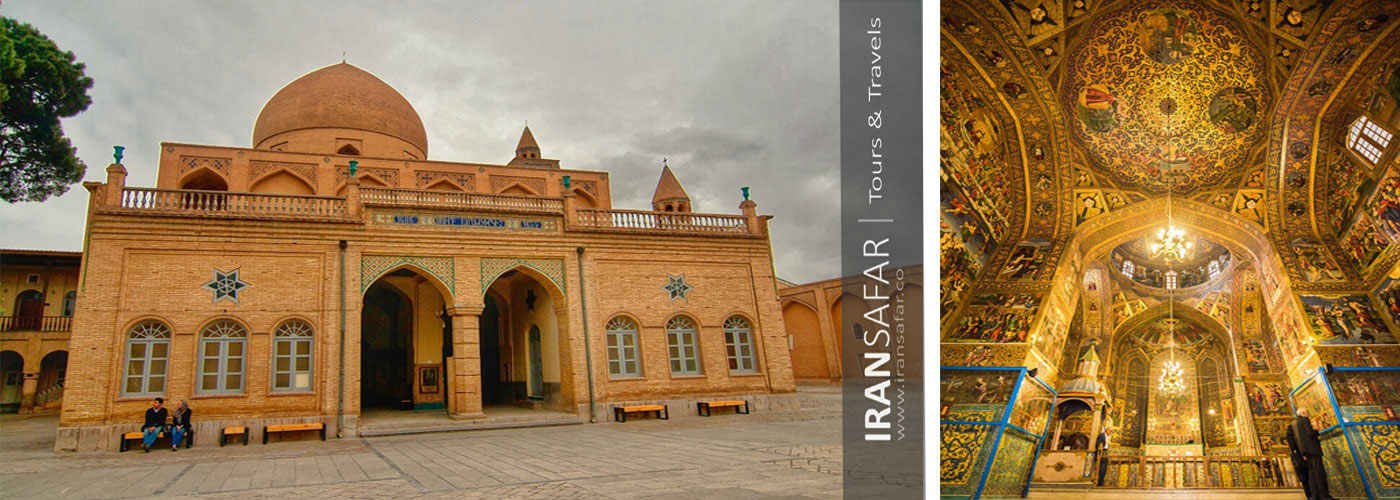 Vank Cathedral, Isfahan, Iran
Vank Cathedral, Isfahan, Iran
Cantur Church , Qazvin
After Nasser-e-Din Shah‘s (Qajar King r. 1848-1896) visit to France, road construction projects began between the cities to connect Tehran with Europe. The road Tehran – Qazvin was built by Saad al-Saltanah, Qazvin’s later governor, but the Anzali road construction was performed by a Russian company called “Insurance and Transport“. The company was handled by a man named “Anatoly Nekalayevich Bastelma“. During the construction project, Russian engineers built a small church in Qazvin, easily recognizable by its red brick structure and turquoise dome.
This church, locally known as the bell tower, has a cruciform design with a large dome in the center of the sanctuary and a smaller dome at the top of the east-facing altar. The entrance of the church is located on the western side and includes the entrance space with a pitched roof at the gate. After the entrance, there is anteroom above which a three-story bell tower is erected about eleven meters high with a small dome above it. The Russian crosses, which hang only on the two sides of the entrance walls, indicate the nationality of its creators.
The churchyard is relatively small and there are tombstones around it. One of the tombs marked with a black stone belongs to a Russian engineer named Nikolai Alexandrovich who died at the age of 9 in the solar year. In addition to the tombstone, there is another stone in the church owned by a Russian pilot reportedly crashed around the city during World War I, and the body of the pilot was buried inside the church.
St. Stephanus, Julfa
Saint Stepanos Monastery Church is the second most important Armenian Church in Iran after its importance and is listed on the World Heritage List.
The church was built in the ninth century AD, but was severely damaged by an earthquake and was restored during the Safavid era. Stephen (St. Stephanus) is one of the first martyrs of the Christian faith and is one of the apostles of Christ and the first preachers of Christianity and there are many churches around the world with the same name. He was stoned to death in Jerusalem in year 36 AD accused of speaking against the Jewish Law.
St Stepanus Church is located in a mountainous area, 16 km west of Jolfa in East Azerbaijan Province, in the middle of a green valley surrounded by a stone wall and seven guard towers which have given it an appearance like a fort. The church consists of the sanctuary, the Daniel’s stove and the bell tower.
The church is also of particular importance to the Armenians of Iran, and thousands of Armenians gather on specific days of the year to perform their special ceremonies.
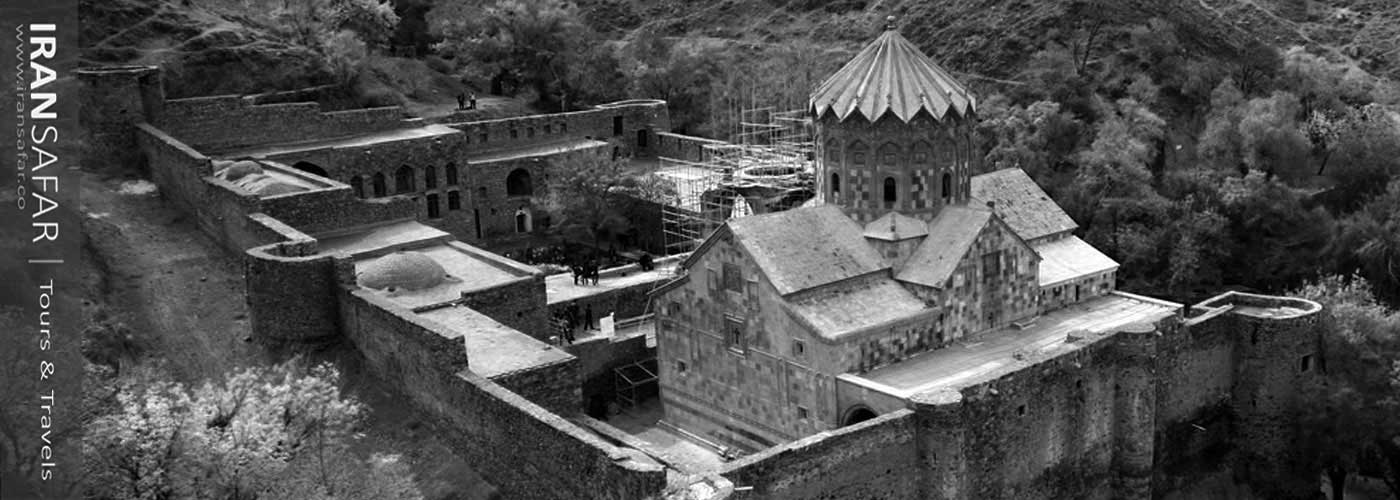 Saint Stepanus Church, Julfa, Iran
Saint Stepanus Church, Julfa, Iran
Saint Mary Church, Tabriz
Is at least 500 years old, so it is not surprising that Tabriz’ Christians have chosen this place for their important celebrations and gatherings. Here is the largest and oldest church in Tabriz where the Armenians of Tabriz hold the National Religious Ceremony of the Armenian Apostolic Church.
According to the oldest tombstone in the church, it can be assured that the church dates back to at least 16th Century AD, the Safavid period. But on the other hand, the architecture of the church portal is similar to that of the Ilkhanid period, giving us the idea of even earlier construction date.
Apart from the architecture of the Ilkhanid period, there is another clue in Marco Polo travelogue that mentions a church in Tabriz on his journey to China.
Based on Armenian architecture style, the church is built in the form of a cross. Beautiful icons of Virgin Mary, Jesus, Apostles and Saints adorn the walls of the altar and the corners of the dome.
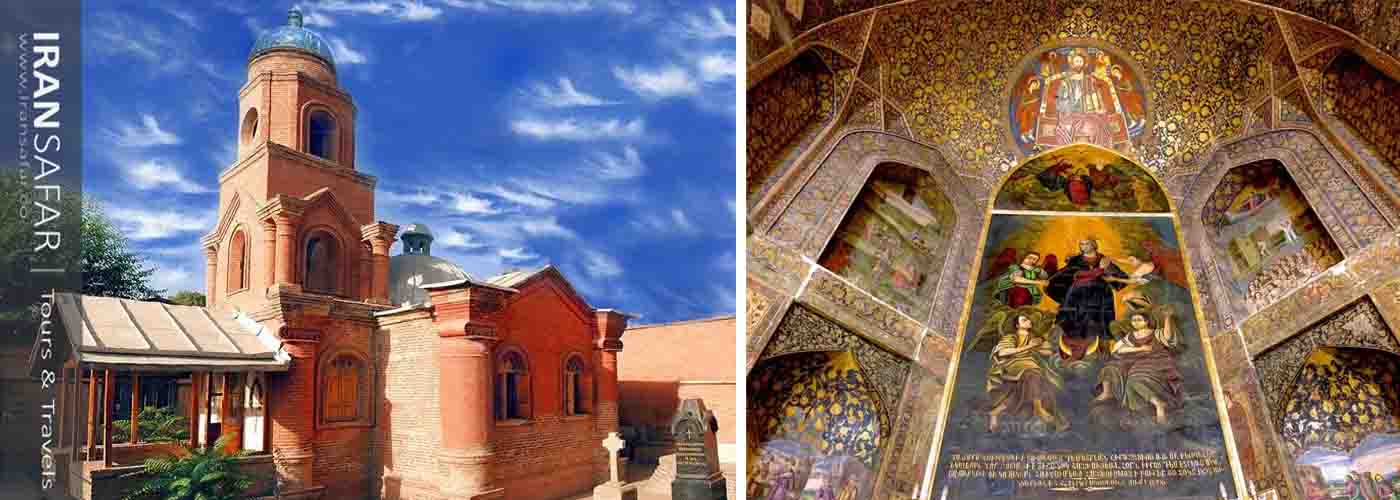 Left: Cantur Church, Qazvin, Iran | Right: Saint Mary Church Altar, Tabriz, Iran
Left: Cantur Church, Qazvin, Iran | Right: Saint Mary Church Altar, Tabriz, Iran



Comment (0)